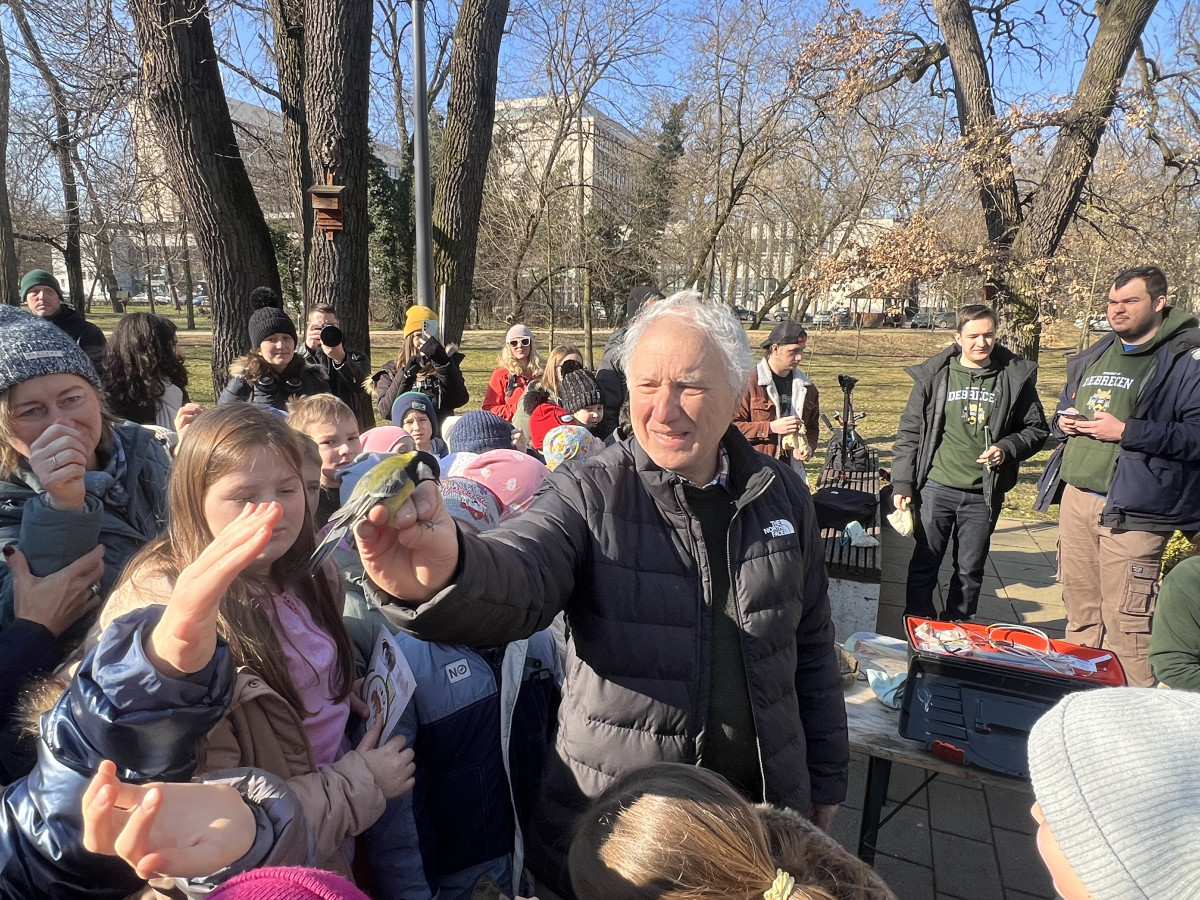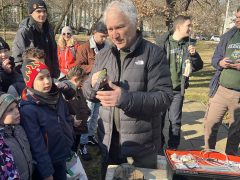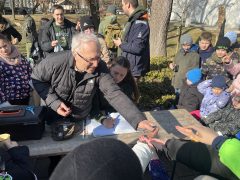Once again, the Environmental Committee of the DEHÖK (Student Government) organized the university’s bird ringing event to great interest. During the Tuesday event, Lajos Juhász, the head of the Department of Conservation, Zoology, and Game Management at the University of Debrecen’s Faculty of Agricultural and Food Sciences and Environmental Management, gave a close-up introduction to the bird species found around the university.
Nearly seventy birds were fitted with unique identification rings at the University Square, primarily great tits, blue tits, and nuthatches—species that most frequently visit bird feeders. At the twelfth edition of the bird ringing event, members of the Environmental Committee of the Debrecen University Student Government, as well as the staff of the Department of Conservation, Zoology, and Game Management, set up special bird-catching nets in the Botanical Garden area, where they placed the captured birds in cloth bags before transferring them to the ringing center.
Those who attended the event had a wonderful experience. University students, as well as groups of preschool and schoolchildren, watched in awe as more and more birds appeared in Lajos Juhász’s hands. The attendees even had the chance to decide on which leg the bird’s ring should be placed and could gently stroke the animals before releasing them into the air.
“Bird ringing is a very old method with more than 110 years of history in bird research in Hungary. When a bird gets a ring with a unique number on its leg, we say it has engaged with science. We record this information in a logbook, and at the end of the year, we compile the data into an international database. If the bird is caught again anywhere, we can identify the place, time, and species based on the ring number,” explained Lajos Juhász, head of the Department of Conservation, Zoology, and Game Management.
Based on the recorded data, specialists can determine the speed and distance of the birds’ migration. The information also serves research purposes.
Lili Sztrehárszki, president of the DEHÖK Environmental Committee, pointed out that bird ringing is a migration research method based on unique markings, providing an excellent opportunity for environmental education as it offers a tangible experience for people, especially the younger generation.
Several preschool and school groups also visited the bird ringing event, which has been held for over ten years at the University of Debrecen. Thanks to experts from the Hungarian Ornithological and Nature Conservation Society, Hortobágy National Park Directorate, the Nature Museum, and the E-mission Nature and Environmental Protection Association, the children gained additional useful and fascinating knowledge and had the opportunity to engage with the environment and wildlife in a playful way.
(unideb.hu)




















